Embarking on a home improvement project is like stepping onto a thrilling rollercoaster. There’s the excitement of envisioning the transformed space, the anticipation of increased functionality and aesthetic appeal, and the underlying nervousness about budgets, timelines, and the inevitable dust and disruption.
Amid this whirlwind, one of the first decisions you’ll encounter is whether to renovate or remodel.
Now, to the untrained ear, these might sound like interchangeable terms, but in construction and design, they hold distinct meanings with significant implications for your project’s scope, budget, and outcome. So, let’s grab our hard hats and blueprints and delve into the renovation vs remodel.
This comprehensive guide untangles the complexities of renovation vs. remodel, providing insights on:
- Defining Renovation and Remodel: Understanding the key differences between these two approaches.
- Factors to Consider: Exploring crucial aspects like project goals, budget, timeline, and property value implications.
- Renovation in Focus: Examining typical renovation projects' benefits and considerations.
- Remodel in the Spotlight: Delving into the world of remodels, their advantages, and challenges.
- The Third Option: Restoration: Understanding the unique restoration approach and its applicability to specific projects.
- Making the Right Choice: Guiding you through decision-making with practical tips and insights.
Whether you’re contemplating a kitchen facelift, a bathroom overhaul, or a whole-house transformation, this guide will equip you with the knowledge to make an informed decision and confidently embark on your project.
Table of Contents
Don’t have time to read it now? Pin it for later!

Renovation vs Remodel: Defining the Difference
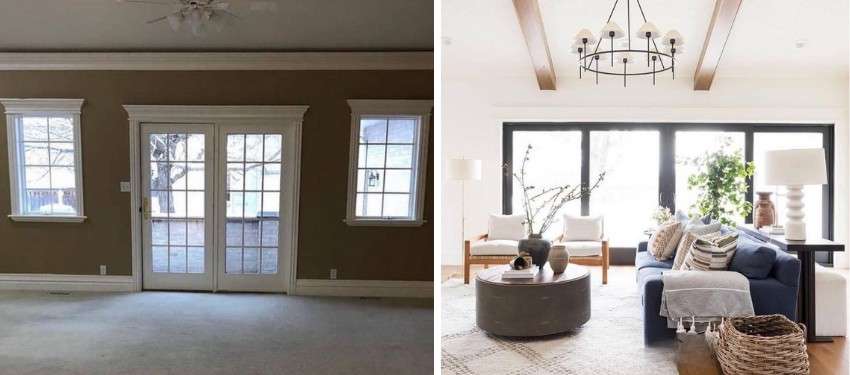
While often used interchangeably, renovation vs remodel represent distinct approaches to home improvement. Understanding these differences is crucial for setting realistic expectations and achieving your desired outcomes.
Renovation: Refreshing and Renewing
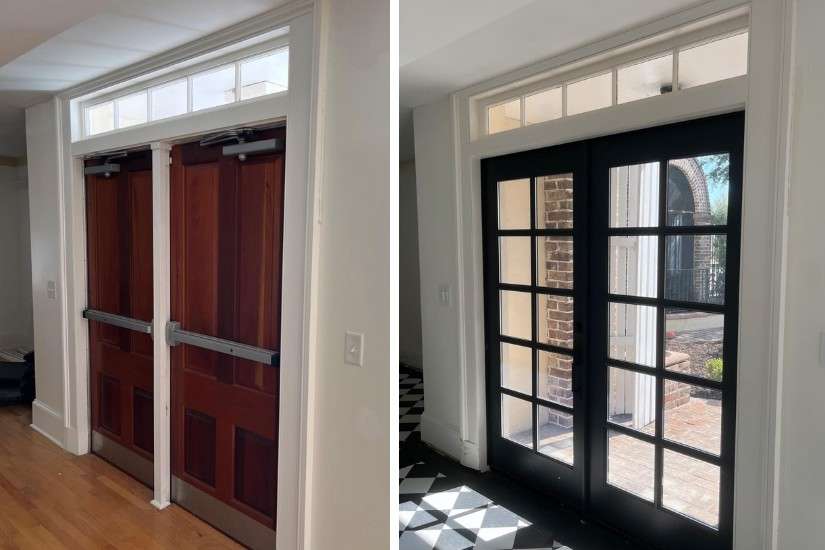
Renovation typically involves restoring or updating an existing space without altering its structure or layout. Think of it as giving your home a fresh coat of paint, upgrading fixtures and finishes, or replacing outdated appliances. It’s about enhancing the existing space while preserving its original character and footprint.
Renovations are often less invasive and disruptive than remodels, making them popular for homeowners who want to improve their living spaces without undergoing major construction. Knowing the renovation costs can help you better prepare; but it’s a budget-friendly way to update your home’s aesthetics, improve functionality, and increase its value.
Remodel: Reimagining and Reconfiguring
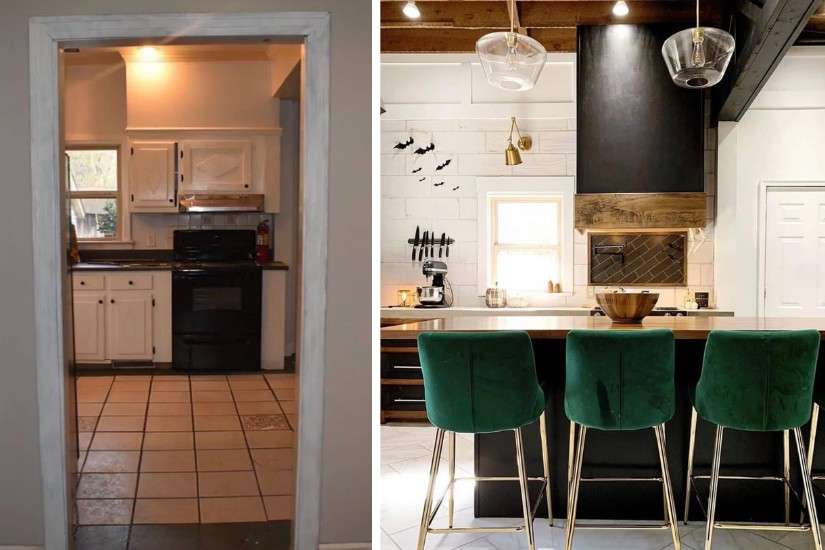
Remodeling, however, entails a more extensive transformation, often involving structural changes, layout modifications, or additions. It’s about reimagining the space and reconfiguring its functionality to suit your needs and lifestyle better. Think of it as knocking down walls, adding a new room, or completely overhauling a kitchen or bathroom.
Remodels offer the opportunity to create a completely new and personalized space tailored to your needs and preferences. They can significantly improve your home’s functionality, flow, and overall value. However, they also tend to be more complex, time-consuming, and expensive than renovations.
Factors to Consider: Making an Informed Choice
Several key factors come into play when deciding between remodel vs renovation. Let’s explore these factors in more detail to help you make an informed decision.
Project Goals: What Do You Want to Achieve?
Your project goals are paramount in determining the right approach.
- Cosmetic Updates: If you're primarily looking to refresh the look and feel of your space with new paint, flooring, or fixtures, a renovation might be sufficient. Renovations can give your home a much-needed facelift without major construction.
- Functional Changes: If you need to improve the functionality of your space, such as adding a bathroom, expanding a kitchen, or creating an open floor plan, a remodel is likely necessary. Remodeling allows you to reconfigure your living spaces to suit your needs and lifestyle better.
- Energy Efficiency: If you want to improve your home's energy efficiency, you might consider a combination of renovation and remodel. Upgrading insulation, windows, and appliances can be achieved through renovation while installing solar panels or geothermal heating systems might require a remodel.
- Accessibility: To make your home more accessible for individuals with disabilities, a remodel might be necessary to widen doorways, install ramps, or modify bathrooms.
- Lifestyle Changes: If your lifestyle or family needs have changed, a remodel might be necessary to create a space that better accommodates your current situation. This could involve adding a home office, expanding a bedroom, or creating a multi-generational living space.
Budget: Balancing Dreams and Reality
Your budget is another crucial consideration when choosing between renovation and remodel.
- Renovation: Renovations are less expensive than remodels, as they typically don't involve major structural changes or extensive labor. However, the cost can still vary depending on the project's scope and materials. It's essential to set a realistic budget and prioritize your must-haves.
- Remodel: Remodels can be significantly more expensive due to the complexity of the work involved, including permits, demolition, and reconstruction. It's crucial to clearly understand your financial resources and be prepared for potential cost overruns. Consider obtaining quotes from multiple contractors and explore financing options if needed.
Timeline: The Waiting Game
Another factor to consider is the duration of your project, especially if you plan to live in the house during construction.
- Renovation: Renovations generally take less time than remodels, as they involve fewer structural changes and complexities. However, the timeline can still vary depending on the size and scope of the project. Communicating your desired timeline with your contractor and setting realistic expectations is important.
- Remodel: Remodels can be time-consuming, often requiring permits, demolition, and extensive construction work. It's essential to factor in potential delays due to weather, material availability, or unforeseen issues. Be prepared for disruptions to your daily life and consider alternative living arrangements if necessary.
Property Value: The Investment Perspective
Home improvement projects can impact your property’s value, but the extent of that impact can vary depending on your chosen approach.
- Renovation: Renovations can enhance your home's appeal and potentially increase its value, especially if you focus on high-impact areas like kitchens and bathrooms. However, the return on investment (ROI) for renovations tends to be lower than for remodels.
- Remodel: Remodels can significantly increase your property's value, especially if they add square footage or improve functionality. However, to maximize your ROI, it's important to choose renovations that align with your neighborhood's character and market trends.
If you’re considering selling your home soon, you must weigh the potential increase in property value against the cost of the project. Consult with a real estate agent to understand the market and which types of renovations or remodels are most likely to yield a good return on investment.
Renovation in Focus: Refreshing Your Space
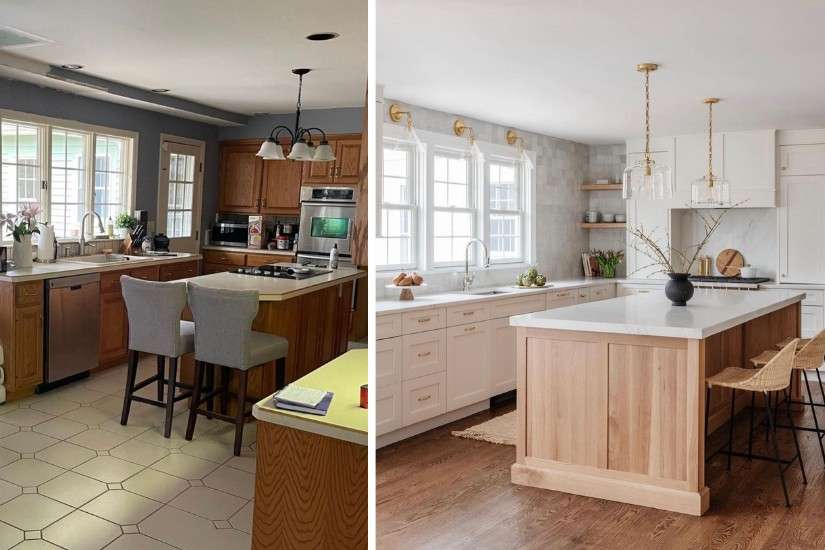
Renovations are popular for homeowners looking to update their living spaces without undergoing a major overhaul. Let’s explore some common renovation projects and their benefits.
Kitchen Renovations: A Culinary Transformation
Kitchen renovations are among the most popular home improvement projects. They can breathe new life into the heart of your home, enhancing functionality, aesthetics, and overall value.
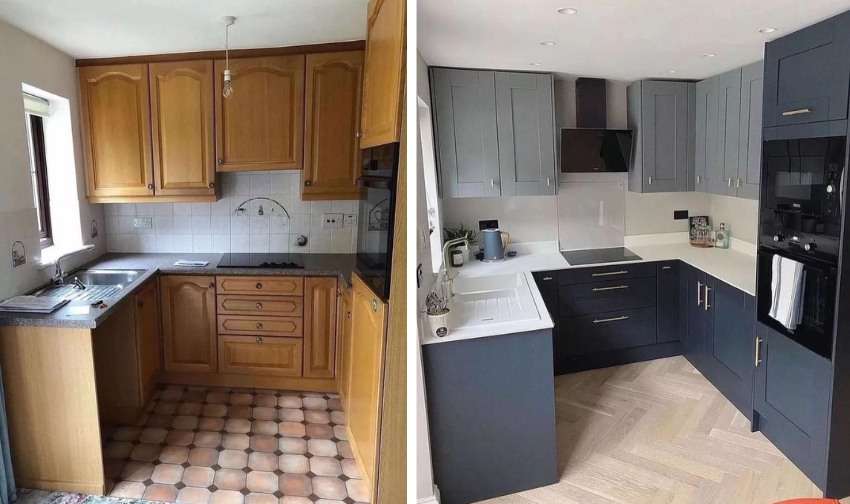
- Cabinet Refacing or Replacement: Update your kitchen's look and feel with new cabinet doors, hardware, or a complete cabinet replacement. Refacing is a more budget-friendly, while a full replacement allows for a complete transformation.
- Countertop Upgrades: Replace worn-out countertops with durable and stylish materials like granite, quartz, or butcher block. Choose a material that complements your kitchen's style and meets your functional needs.
- Backsplash Refresh: Add a touch of personality and visual interest with a new backsplash. Choose from materials like tile, glass, or stone to create your desired aesthetic.
- Appliance Upgrades: Replace outdated appliances with energy-efficient models that enhance functionality and style. Consider upgrading to stainless steel appliances or smart appliances with advanced features.
- Lighting Enhancements: Install new lighting fixtures to improve task lighting and create ambiance. For greater control and flexibility, consider adding under-cabinet lighting, pendant lights, or dimmer switches.
- Flooring Replacement: Update your kitchen with new tile, hardwood, or laminate. Choose a durable and easy-to-clean material that complements your kitchen's design.
Bathroom Renovations: A Spa-Like Retreat
Bathroom renovations can transform your daily routine into a luxurious experience. From updating fixtures and finishes to improving accessibility, a bathroom renovation can significantly enhance your home’s comfort and value.
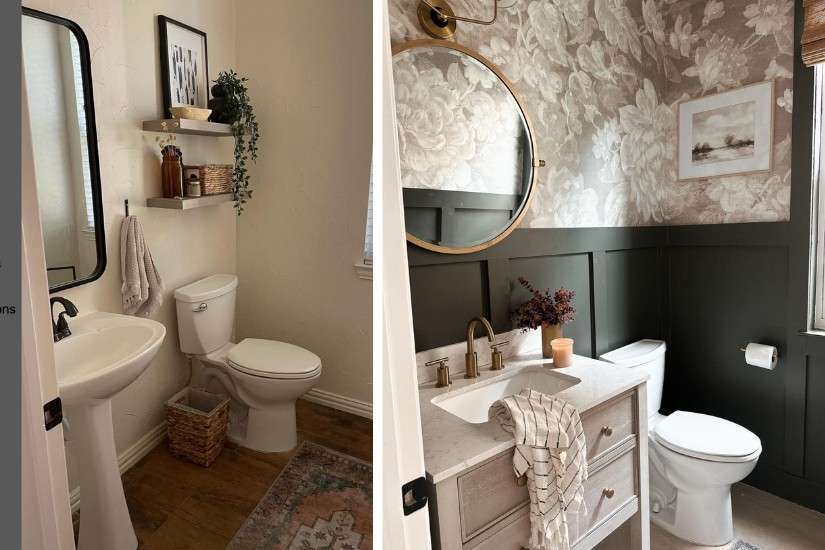
- Vanity and Sink Replacement: Upgrade your vanity and sink for a more modern and functional look. Consider adding storage solutions or a double vanity for increased convenience.
- Shower or Tub Upgrade: Replace an old shower or tub with a sleek and spacious new one. Consider adding features like rainfall showerheads or jetted tubs for a spa-like experience.
- Tile and Flooring: Refresh your bathroom's walls and floors with new tile or flooring. Choose from various colors, patterns, and textures to create your desired aesthetic. Consider using slip-resistant tiles for safety.
- Lighting and Ventilation: Improve lighting and ventilation for a brighter, more comfortable bathroom. Install new light fixtures and exhaust fans, and consider adding a window or skylight for natural light.
Other Popular Renovation Projects
In addition to kitchens and bathrooms, other popular renovation projects include:
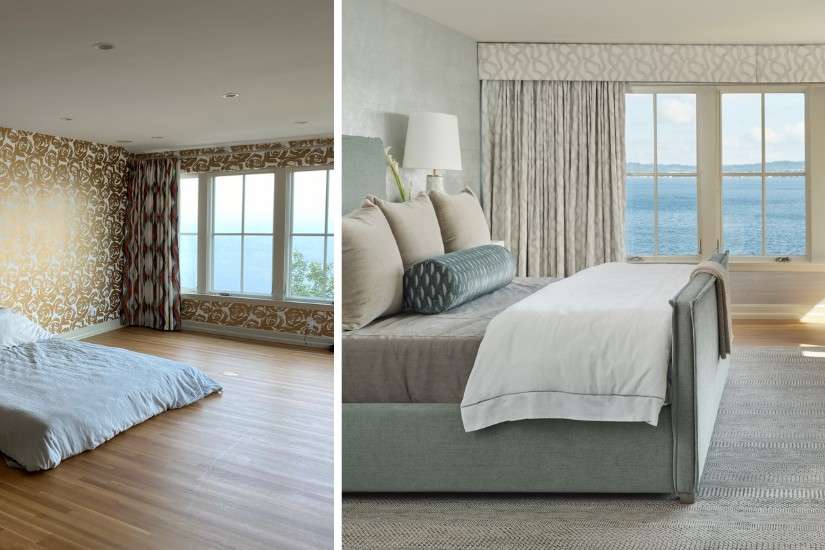
- Flooring Upgrades: Replace worn-out carpets or outdated flooring with new hardwood, laminate, or tile. New flooring can dramatically improve the look and feel of any room, adding warmth, style, and value to your home. Consider the traffic and usage of each room when choosing your flooring material.
- Painting and Wallpaper: Freshen up your walls with a new coat of paint or add a touch of personality with wallpaper. Choose colors and patterns that complement your furniture and decor. Painting is a relatively inexpensive way to transform a room, while wallpaper can add a unique and dramatic touch.
- Lighting Upgrades: Replace outdated light fixtures with modern and energy-efficient options. Upgrading your lighting can improve the ambiance of your home and reduce your energy bills. Consider using LED bulbs and smart lighting systems for convenience and energy savings.
- Landscaping: Enhance your home's curb appeal with landscaping upgrades, such as new plants, trees, or hardscaping features. A well-maintained landscape can create a welcoming first impression and increase your property's value. Consult with a landscaper to design a plan that complements your home's architecture and your personal style.
- Window and Door Replacements: To improve insulation and reduce energy costs, replace old, drafty windows and doors with energy-efficient models. New windows and doors can also enhance your home's aesthetics and security. Choose materials and styles that complement your home's overall design.
Remodel in the Spotlight: Reimagining Your Space
Remodels are a bolder approach to home improvement, offering the opportunity to transform your living spaces completely and reimagine their functionality. Let’s explore some common remodel projects and their advantages.
Kitchen Remodels: A Culinary Revolution
Kitchen remodels go beyond cosmetic updates, often involving structural changes, layout modifications, or expansions. They can create a dream kitchen that’s both functional and aesthetically pleasing, tailored to your specific needs and lifestyle.
- Open Floor Plans: Knock down walls to create an open and airy kitchen that seamlessly connects to other living spaces. This can improve flow and create a more spacious and inviting atmosphere, perfect for entertaining and family gatherings.
- Island Additions: Add an island for additional counter space, seating, and storage. Islands are popular in modern kitchens, providing a multifunctional workspace and gathering area.
- Pantry Expansion or Creation: Expand your pantry or create a new one from scratch to increase storage capacity. A well-organized pantry can help keep your kitchen clutter-free and make meal prep a breeze.
- Relocation of Appliances or Plumbing: Reconfigure your kitchen layout by relocating appliances or plumbing fixtures to optimize workflow and functionality. This can create a more efficient and ergonomic kitchen design tailored to your cooking and entertaining habits.
Bathroom Remodels: A Luxurious Oasis
Bathroom remodels can create a spa-like retreat within your own home. They often involve expanding the space, adding new features, or completely reimagining the layout to create a personalized and indulgent sanctuary.
- Expand the Space: Knock down walls or add square footage to create a more spacious and luxurious bathroom. This can accommodate features like a double vanity, a walk-in shower, or a freestanding bathtub, creating a more comfortable and functional space.
- Add a Walk-in Shower: Replace a traditional tub/shower combo with a luxurious walk-in shower featuring rainfall showerheads, body jets, and other spa-like amenities. This can create a more modern and accessible bathroom experience, perfect for relaxation and rejuvenation.
- Install a Double Vanity: Upgrade to a double vanity for convenience and storage space. This particularly benefits couples or families sharing a bathroom, allowing for simultaneous use and reducing morning rush hour congestion.
- Incorporate Natural Light: Add windows or skylights to bring in natural light and create a more inviting atmosphere. Natural light can make a bathroom feel more spacious and airy, enhancing its overall appeal.
- Upgrade Fixtures and Finishes: Replace outdated fixtures and finishes with modern and stylish options. This can include new faucets, showerheads, lighting, and hardware, giving your bathroom a fresh and updated look.
Other Popular Remodel Projects
In addition to kitchens and bathrooms, other popular remodel projects include:
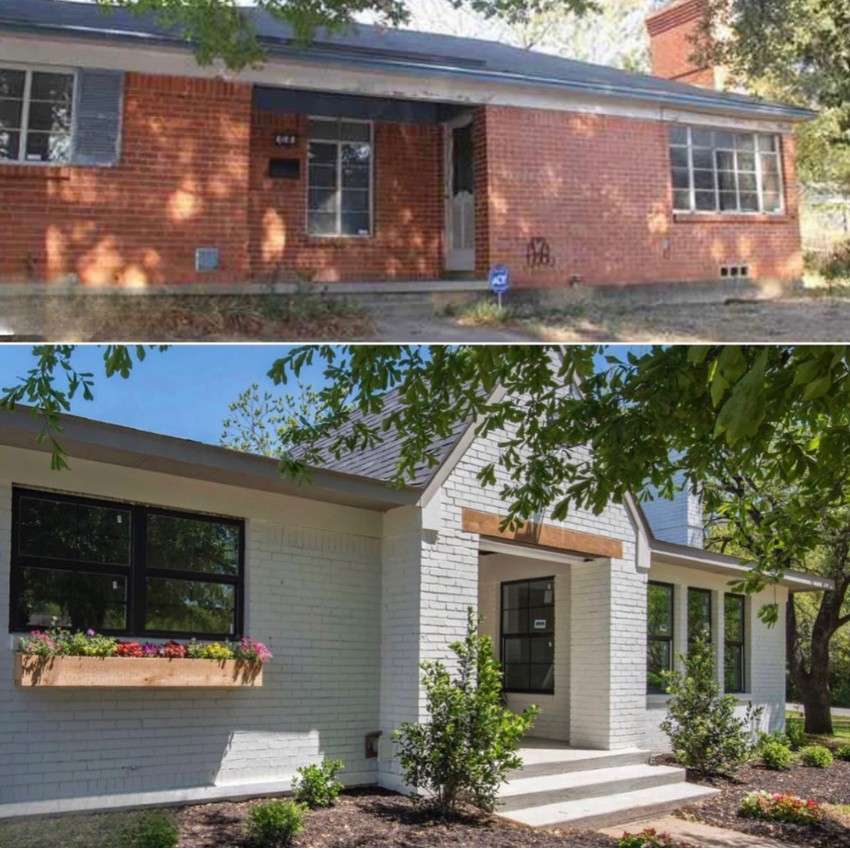
- Basement Finishing: Transform an unfinished basement into a functional living space, such as a home theater, game room, or guest suite. Basement remodels can add significant value to your home and provide additional living space for your family or guests.
- Attic Conversions: Convert an unused attic into a bedroom, office, or playroom, adding valuable square footage to your home. Attic conversions can be cost-effective to increase your living space and improve your home's functionality.
- Room Additions: To accommodate your growing needs, add a new room to your home, such as a sunroom, family room, or master suite. Room additions allow you to customize your home to your specific lifestyle and preferences.
- Whole-House Remodels: Embark on a complete home transformation, updating every room and system to create a modern and functional living space. Whole-house remodels are a major undertaking but can result in a stunning and personalized home that perfectly suits your needs.
- Outdoor Living Spaces: Create an outdoor oasis with a deck, patio, or kitchen. These spaces can extend your living area and provide opportunities for relaxation and entertainment.
The Third Option: Restoration – Preserving History
In addition to renovation and remodel, there’s a third approach to home improvement: restoration. Restoration involves returning a historic or older home to its original condition and preserving its architectural integrity and character.
When it comes to renovation vs remodel and restoration, this renovation approach requires specialized knowledge and expertise, often involving period-appropriate materials and techniques.
While restoration can be a rewarding endeavor for those passionate about preserving history, it’s also a complex and often expensive undertaking that requires careful planning and execution.
It’s essential to work with experienced professionals specialising in historic preservation to ensure the project is done correctly and in compliance with relevant regulations.
When to Consider Restoration
Restoration is typically considered for homes with historical significance or unique architectural features worth preserving. It’s not just about updating or modernizing the space; it’s about honoring its heritage and restoring it to its former glory.
- Historic Homes: If you own a historic home, restoration can help you maintain its authenticity and charm while improving its functionality and livability.
- Homes with Unique Architectural Features: If your home has unique architectural details, such as ornate moldings, stained glass windows, or original woodwork, restoration can help preserve these features for future generations to enjoy.
- Passion for Preservation: If you're passionate about historic preservation and want to contribute to preserving architectural heritage, restoration can be a fulfilling and rewarding endeavor.
Challenges of Restoration
Restoration projects can be more complex and challenging than renovations or remodels.
- Specialized Expertise: Restoration requires specialized knowledge and skills in historic preservation, often involving traditional techniques and materials. Working with experienced professionals who understand the intricacies of restoration work is essential.
- Regulatory Compliance: Historic homes may be subject to specific regulations and guidelines governing alterations and renovations. It's important to research and comply with these regulations to avoid legal issues and preserve the property's historical integrity.
- Cost and Time: Restoration projects can be costly and time-consuming, as they often involve sourcing rare materials, replicating original features, and adhering to strict preservation standards. Before embarking on a restoration project, it's important to have a realistic budget and timeline in mind.
Making the Right Choice: Renovation, Remodel, or Restoration?
Choosing the right approach for your project depends on various factors, including your goals, budget, timeline, and the specific characteristics of your property.
- Consider your goals: What do you want to achieve with your project? Are you looking for a simple refresh, a functional improvement, or a complete transformation?
- Assess your budget: Be realistic and factor in potential contingencies or unexpected expenses. Get quotes from multiple contractors and compare their estimates to ensure you get the best value for your money.
- Evaluate your timeline: How much time will you dedicate to your project? Are you prepared for potential delays and disruptions? Consider your schedule and lifestyle when choosing between a renovation or remodel, as remodels typically take longer.
- Consider your property's age and style: If you own a historic or older home, restoration might be a viable option to preserve its unique character. However, restoration projects can be complex and expensive, so carefully weigh the costs and benefits.
- Consult with professionals: Seek advice from architects, contractors, and designers to explore your options and develop a plan that meets your needs and budget. Their expertise can help you make informed decisions and avoid costly mistakes.
Key Differences: Renovation vs Remodel vs Restoration
To further clarify the distinction between renovation, remodel, and restoration, let’s highlight some key differences:
- Scope: Renovations involve cosmetic updates and minor repairs, remodels involve structural changes and layout modifications, while restoration focuses on returning a property to its original condition.
- Cost: Renovations are typically the least expensive, followed by remodels, with restoration projects potentially being the most costly.
- Timeline: Renovations are generally the quickest to complete, followed by remodels, while restoration projects can take significantly longer.
- Permits: Remodels and restoration projects often require permits and approvals, while renovations may not, depending on the scope of the work.
- Expertise: Renovations can often be tackled by DIY enthusiasts or general contractors, remodels require the expertise of architects, engineers, and specialized contractors, and restoration projects necessitate the involvement of restoration specialists and experts in historic preservation.
Making the Most of Your Home Improvement Project: Additional Tips
Regardless of whether you choose to renovate, remodel, or restore, here are some additional tips to help you make the most of your home improvement project.
- Plan Carefully: Invest time in planning and research before starting your project. Define your goals, set a realistic budget, and create a detailed timeline. This will help you stay organized and avoid costly mistakes. Consider creating a mood board or vision board to visualize your desired outcome.
- Hire Reputable Professionals: Choose experienced and licensed contractors, architects, and designers who specialize in your type of project. Check their references, reviews, and portfolios to ensure they fit your needs well. Don't hesitate to ask for recommendations from friends, family, or neighbors who have recently completed similar projects.
- Obtain Necessary Permits: Ensure you have all the required permits and approvals before starting any construction work. Failure to do so can result in fines and delays. Check with your local building department to determine the necessary permits for your project.
- Communicate Effectively: Maintain open and transparent communication with your contractors and designers throughout the project. Regularly check progress, address any concerns, and ensure everyone is on the same page. Clear communication can help prevent misunderstandings and ensure the project stays on track.
- Be Prepared for Disruptions: Home improvement projects can be disruptive. Be prepared for dust, noise, and potential delays. Create a temporary living space or stay elsewhere during major renovations if possible. This can help minimize stress and inconvenience during the construction process.
- Focus on Quality: Invest in high-quality materials and workmanship to ensure your project stands the test of time. While it might be tempting to cut corners to save money, prioritize quality to avoid costly repairs or replacements down the line.
- Enjoy the Process: While home improvement projects can be stressful, enjoy the process and the transformation of your living space. Celebrate milestones, document your progress, and appreciate the journey towards your dream home. Remember, it's an opportunity to create a space that reflects your personality, style, and aspirations.
The Environmental Impact of Home Improvement: Sustainable Choices
In today’s world, it’s increasingly important to consider the environmental impact of our choices, including home improvement projects. By making sustainable choices, you can reduce your carbon footprint and create a healthier living environment for yourself and future generations.
- Energy-Efficient Appliances and Systems: When replacing appliances or upgrading your home's systems, opting for the latest energy-efficient models is wise. These models often come with advanced technology that enhances functionality and significantly reduces your energy consumption and utility bills. Look for appliances with the Energy Star label, which meet strict efficiency guidelines set by the government.
- Sustainable Materials: Choose building materials that are eco-friendly, renewable, and locally sourced whenever possible. This can include reclaimed wood, which provides a rustic charm, recycled materials that give new life to old resources, or low-VOC paints and finishes that contribute to better indoor air quality. These sustainable choices help minimize environmental impact and support local economies.
- Water Conservation: To promote conservation, incorporate water-saving fixtures and appliances into your renovation or remodel. Consider installing low-flow toilets that use less water per flush, water-saving showerheads that maintain pressure while reducing water usage, and drought-resistant landscaping that thrives with minimal irrigation. These steps conserve water and lower utility costs in the long run.
- Waste Reduction: Minimize waste during your project by donating or recycling usable materials. Organizations and charities often accept building materials, appliances, and furniture in good condition, reducing landfill use and helping those in need. Consider repurposing or upcycling old furniture or fixtures instead of throwing them away, which can add a unique, personal touch to your home while being environmentally responsible.
By incorporating sustainable practices into your home improvement project, you can create a beautiful and functional space while contributing to a healthier planet.
The Importance of Professional Design: Maximizing Aesthetics and Functionality
While some homeowners may opt for a DIY approach, enlisting the help of a professional designer can be invaluable for maximizing the aesthetics and functionality of your renovation or remodel.
- Expertise and Vision: Designers bring a wealth of knowledge and experience to the table, assisting you in creating a cohesive and well-planned design that not only reflects your style but also meets your practical needs. Their vision can transform your ideas into reality, ensuring every detail is considered and thoughtfully executed.
- Space Optimization: Designers can help you optimize your space effectively, ensuring efficient layouts that make the most of the available area. They can provide solutions for adequate storage, make the space functional yet aesthetically pleasing, and ensure a comfortable flow throughout the environment.
- Material Selection: With their expertise, designers can guide you in choosing the right materials, finishes, and colors to bring your desired aesthetic to life and guarantee durability and longevity. They can help you navigate the myriad of options available to find those that best suit your lifestyle and budget.
- Project Management: Designers can take on the role of project manager, overseeing the entire process from start to finish. They coordinate with contractors, vendors, and other professionals to ensure everything runs smoothly and according to plan. This allows you to focus on the excitement of seeing your project come together without the stress of managing every detail.
Investing in professional design can save you time, money, and frustration in the long run, ensuring that your home improvement project achieves its full potential.
Renovation vs Remodel: Inspiring Before-and-After Transformations
One of the best ways to visualize the potential of your home improvement project is to see real-life examples of renovations and remodels. Let’s explore some inspiring before-and-after transformations that showcase the power of these two approaches.
- Kitchen Renovation: A dated kitchen with dark cabinets, laminate countertops, and a lackluster backsplash is transformed into a bright and airy space with white shaker cabinets, quartz countertops, a subway tile backsplash, and stainless steel appliances.
- Bathroom Remodel: A cramped and outdated bathroom is expanded and reconfigured to include a spacious walk-in shower, double vanity, and soaking tub. New tile, lighting, and fixtures create a luxurious and spa-like atmosphere.
- Basement Finishing: An unfinished basement is converted into a cozy family room with a fireplace, built-in entertainment center, and ample seating.
- Attic Conversion: A dusty and unused attic is transformed into a bright and airy home office with skylights, built-in shelving, and a comfortable workspace.
- Whole-House Remodel: A dated and compartmentalized home is opened up and modernized with a new floor plan, updated finishes, and energy-efficient systems.
These before-and-after examples demonstrate the dramatic transformations that can be achieved through renovation and remodel projects. By envisioning the possibilities and working with skilled professionals, you can create a home that reflects your unique style and meets your evolving needs.
Final Thoughts
In conclusion, deciding between a renovation and a remodel depends on your needs, goals, and budget. A renovation is a good option for cosmetic updates and minor repairs, while a remodel is ideal for functional changes and major transformations.
Restoration offers a unique approach for historic or older homes, preserving their architectural integrity and character. Regardless of which path you choose, careful planning, research, and collaboration with experienced professionals are crucial for achieving your desired outcomes and maximizing the value of your investment.
Remember, it’s not just about choosing between renovation vs remodel; it’s about finding the right solution for your specific needs and creating a space you’ll love for years.
Next Steps:
- Define your goals: Clearly articulate what you want to achieve with your project.
- Assess your budget: Set a realistic budget and factor in potential contingencies.
- Evaluate your timeline: Determine how much time you can dedicate to your project and be prepared for potential delays.
- Consult with professionals: Seek advice from architects, contractors, and designers to explore your options and develop a plan.
- Embrace the transformation: Enjoy the process of transforming your living space and creating a home that reflects your unique style and personality.
Remember, home improvement is an investment in your happiness and well-being. By choosing the right approach and working with the right professionals, you can create a space you’ll love for years.




